How we read: the neuroscience behind literacy
Reading and writing are essential skills for modern life, but how often do you think about how your brain processes written information? Based at the University of Alberta in Canada, Professor Jacqueline Cummine is helping decode how we read – in particular, the important role of our senses – and using these findings to help people who struggle with literacy skills.
Talk like a cognitive neuropsychologist
Cognitive — relating to conscious mental activities, such as thinking, reasoning, remembering and using languages
Larynx — also known as the voice box, allows air to pass from the throat to the trachea (the windpipe)
Literacy — the ability to read and write
Neuroplasticity — the ability of the brain to change its activity by reorganising its structure or functions
Neuroscience — the science of the structure and function of the nervous system and brain
Phoneme — a distinct unit of sound that makes up words and language
Speech motor planning — the ability to come up with an idea, plan how to express it, and then say it
Understanding and using written language is a highly sophisticated skill, and humans are the only animals able to do so to any degree of complexity. Most of us can process series of symbols with near-infinite possible combinations, and understand what they signify, all in milliseconds. However, humans have only been reading for around 5,000 years, which is not enough time for this skill to evolve – which means we read using parts of our brains that likely evolved for something else.
Understanding how we read is important, particularly to provide solutions for those with lower reading and writing abilities. “Literacy skills have a profound impact on a person’s life,” says Dr Jacqueline Cummine, a professor at the Faculty of Rehabilitation Medicine – Communication Science and Disorders at the University of Alberta. “Even subtle differences in literacy skills can significantly affect academic success, employment and mental well-being.” Jacqueline is studying how we read, how these systems can break down, and how to best help people with reading, hearing or speech impairments to read and write effectively.
Spoken word, written word
“Different sensory systems work together to help us understand the different symbols in a text,” says Jacqueline. “Our eyes, ears and touch systems all play important roles in reading.” While it is obvious how sight is involved in reading, research has also uncovered the important roles of hearing and touch. Words are made up of small units of sound called phonemes – with specific sounds associated with /ch/ or /b/, for instance – which we need to be able to identify accurately to read proficiently. This identification is most rapid if we can ‘hear’ the sounds in our heads, which are learnt through listening and speaking. Touch is also involved. “Part of our reading proficiency is linked to our ability to say words and sounds quickly and fluently,” says Jacqueline. “We use touch to rapidly and accurately move our tongues, lips and larynx to produce sounds.”
Typically, we learn how to read well after we learn how to speak, and it is theorised that reading builds upon our speech production system. “Imagine a child learning to read, being taught by an adult,” says Jacqueline. “The adult shows the child letters and tells them how they sound, and the child repeats them. Once they have identified these letters correctly, the child can put them together to form words.” For instance, the phonemes /c/, /a/ and /t/ can be put together to make /cat/. Because this process is taught through speech, learning how to identify words and letters is closely linked to learning how they sound and how they are produced. “This understanding led us to make some predictions about the role of the mouth in reading processes,” says Jacqueline. “For example, we investigated how if adults held large lollipops in their mouths, their silent reading abilities were impacted, as they were faster to distinguish real words from nonsense words. We’re continuing to explore these fascinating effects!”
Reading impairments
People can have difficulty reading for several reasons. For instance, if a person is born deaf and, therefore, never learns how letters and words ‘sound’, it can be very challenging to learn how to read, as the combinations of letters that make up words can appear arbitrary. Reading also becomes progressively more difficult to learn as we age, as our brains become less adaptable. “If someone is not given a chance to learn to read at a young age, it becomes harder to learn later in life,” says Jacqueline. “It’s still possible but can be very difficult.”
Issues with reading can also be cognitive. “Another type of breakdown can happen in the brain,” explains Jacqueline. “This is when, even if the senses work well, the brain cannot process the information correctly, leading to difficulties with word recognition, decoding or production.” A common example of this is dyslexia, a learning-based disorder where individuals have trouble learning to read, despite having no intellectual challenges.
In the brain
Jacqueline’s lab uses several different technologies to look inside the brain and see what effect different stimuli have on neural activities. “We use functional magnetic resonance imaging (fMRI) and functional near infrared spectroscopy (fNIRS),” says Jaqueline. “When a part of the brain is ‘working’, it uses oxygen, which it receives from blood, and both methods detect this process – fMRI through radio frequency waves, and fNIRS through light waves. When these waves hit molecules such as oxygen, they bounce back to our sensors in an altered state, which we can decode.” A third technique, diffusion tensor imaging (DTI), measures how water moves through white matter tracts, which are special pathways that connect and coordinate communications between different parts of the brain.
Reference
https://doi.org/10.33424/FUTURUM421
“There are three main parts of the brain that we are interested in,” explains Jacqueline. “The inferior frontal gyrus stores information about speech motor plans and sequences for articulation. The temporo-parietal region helps join phonemes together. And the inferior temporal gyrus is important for letter and word recognition.” For example, when a child learns to read the word /red/, they will likely already be familiar with how it sounds; therefore, the inferior frontal gyrus already has this information. Then, the inferior temporal gyrus stores information about the individual letters, and the temporo-parietal region helps link the letters to sounds and words. “When we put the whole word together in print, we connect the three systems,” says Jacqueline. “These connections are strengthened over many years of learning, leading to a fluent and efficient system to promote communication.”
Into the real world
Jacqueline’s team has designed and tested two training programmes to help adults with dyslexia improve their reading. “In skill-based training, we focus on teaching skills important for reading, like understanding phonemes and letter patterns, and knowing how to read and spell long or difficult words,” explains Jacqueline. “In goal-based training, individuals set their own goals associated with reading and we design activities to help them achieve them.” Before and after the training, Jacqueline’s team tested reading performance and measured brain activity using fNIRS. “We found that both programmes improved reading performance in adults with dyslexia,” says Jacqueline. “We also saw changes in brain activity, providing evidence for neuroplasticity following intensive training.”
Jacqueline’s team is now working on providing resources for adults with literacy challenges to train and enhance their reading skills, to improve their daily well-being. “We also want to go beyond reading-specific skills,” says Jacqueline. “For example, a lot of adults with reading impairments feel anxiety in social situations, so also addressing these wider goals could have far-reaching effects on day-to-day living.” The team is partnering with a non-profit organisation to pilot this work in the community, helping to improve people’s everyday lives.
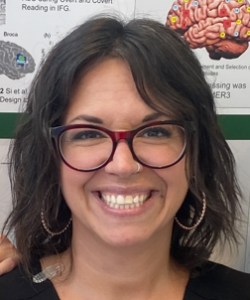 Professor Jacqueline Cummine
Professor Jacqueline Cummine
Faculty of Rehabilitation Medicine — Communication Sciences & Disorders, University of Alberta, Canada
Field of research: Cognitive Neuropsychology
Research project: Exploring how the brain is wired to enable literacy, with the aim of supporting people with literacy difficulties
Funder: The Natural Sciences and Engineering Research Council of Canada (NSERC)
About cognitive neuropsychology
Cognitive neuropsychology is the study of how the structure and function of the brain relates to our perception of the world, reasoning, memory and language. This involves studying brain activity directly, examining the effects of neurological illnesses and how certain stimuli affect performance of specific tasks. Jacqueline explains more about her field:
“For me, the greatest reward of my role is getting to work with and training new scientists. There are so many curious minds out there that just need a supportive space to explore their questions. The enthusiasm and energy that emerging scientists bring to research is a constant rejuvenation!
“An ongoing challenge for my field is trying to buck the status quo. There is a lot of ‘tradition’ with regards to ideas and approaches, which I feel can sometimes impede our ability to move science forward efficiently. I hope that initiatives to increase diversity and inclusion can alter this trajectory, making space for a more holistic, flexible and nuanced approach to advancing knowledge.
“For aspiring cognitive neuropsychologists, I recommend getting into a lab as soon as possible. Volunteering with professors or graduate students is the best way to learn about a topic and understand what it ‘looks like’ to be in a particular field. Every lab has a different environment, a unique approach to science, varying interpersonal dynamics, and so on. The hands-on experience of being in a lab, or several over time ideally, is an invaluable opportunity.”
Pathway from school to cognitive neuropsychology
• At school and post-16 years old, subjects such as biology, chemistry, psychology, mathematics and English or other languages can provide a good foundation for an appropriate undergraduate degree at university.
• Jacqueline says that many areas of study can lead to a career in her field, including undergraduate degrees in psychology, linguistics, neuroscience, biology and medicine.
Explore careers in cognitive neuropsychology
• The University of Alberta holds an annual Program Discovery Week, which the Faculty of Rehabilitation
Medicine participates in, to help high school students learn about the many varied programmes the university offers.
• Knowing Neurons is an award-winning neuroscience website run by young neuroscientists. It includes articles, videos and information about neuroscience careers and events.
• Individuals with degrees in cognitive neuroscience can work in many areas, including academia, healthcare, government, industry and education, to name just a few.
Meet Jacqueline
When I was at the University of Saskatchewan, a close friend encouraged me to pursue a career in science. She’s an amazing human and was incredibly supportive. Funnily enough, she herself chose a different career, but I became a scientist!
My own experiences have informed my research. I have had personal struggles with reading new and complex words, and have suffered hearing loss. For many years, I hid both these challenges and was embarrassed about their consequences in social scenarios, such as not knowing or mishearing the words that people used. But now, I embrace how my experiences with these struggles have provided me with novel insights into potential underlying mechanisms and strategies for overcoming these challenges.
An example of how my experiences have shaped my research is when I read ‘A Hitchhiker’s Guide to the Galaxy’ by Douglas Adams. I found myself unable to retain much information about the story, because so many characters had bizarre and unique names – Zaphod Beeblebrox, for instance. Because I couldn’t ‘say’ the names, it was like I was ‘seeing’ them for the first time every time they appeared in the book, which disrupted my ability to comprehend the story. This has informed our research that explores reading comprehension and reading fluency for individuals with reading impairments.
I aspire to help make life easier for adults with reading challenges. Our world is increasingly reliant on the written word, be it emails, texts social media and so on. In an ideal world, we would have accessible remediation programmes for all those who have difficulties with reading.
Do you have a question for Jacqueline?
Write it in the comments box below and Jacqueline will get back to you. (Remember, researchers are very busy people, so you may have to wait a few days.)

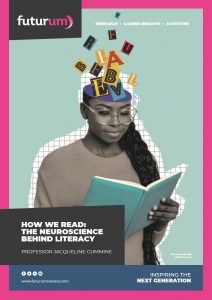
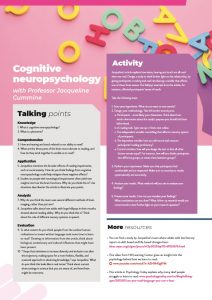


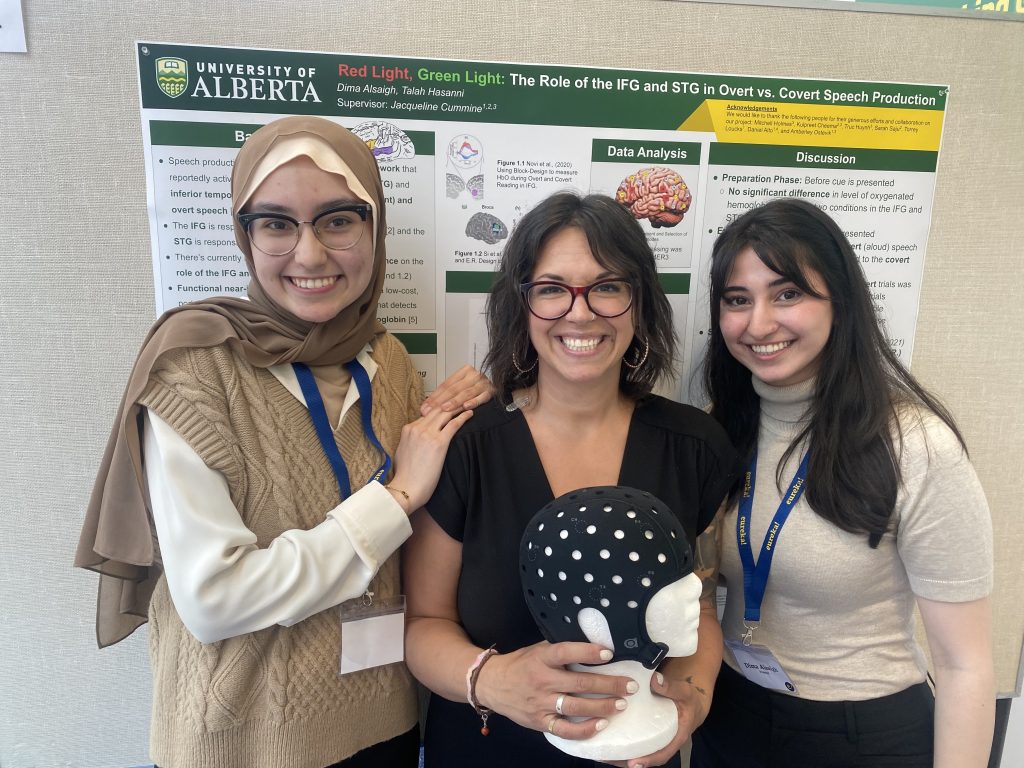
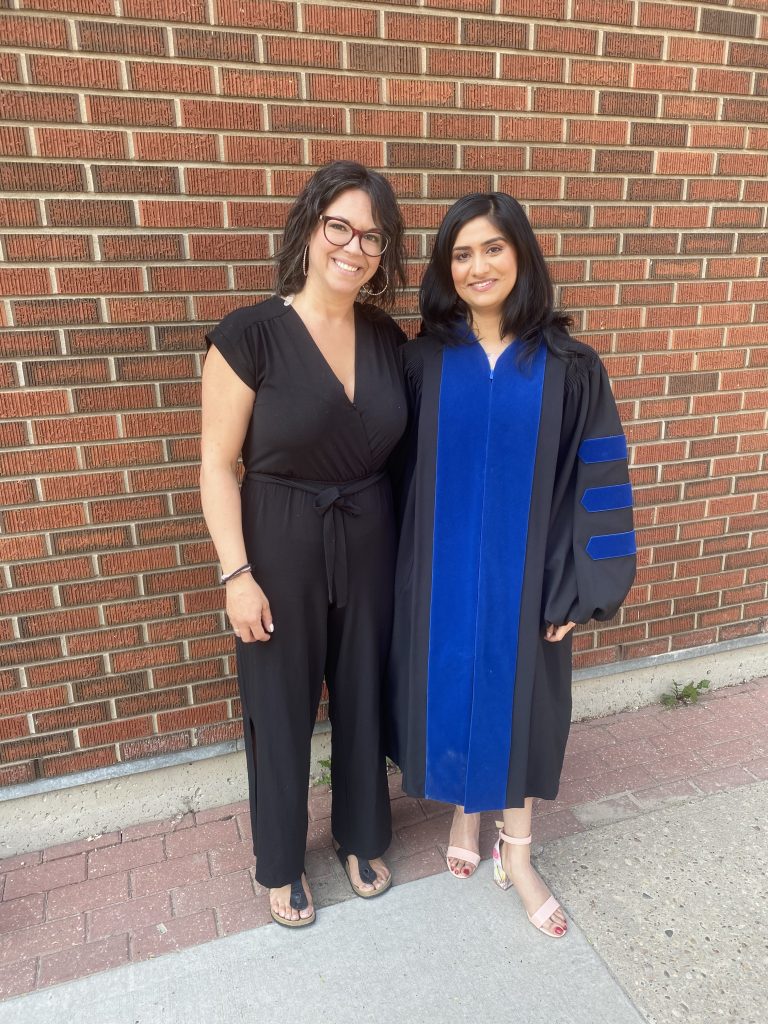
Dear Dr. Cummine,
I am a cognitive neuroscientist who has been asked by my institution to develop a doctoral-level course on the Neuroscience of Literacy. My background has focused on the neuroscience of memory and decision-making. Given your expertise in the field of literacy, what books and/or articles should I consider as required reading for my future students?
Thanks, in advance, for any recommendations.
Hi Dr. Auday – Here are a few recommendations:
1) Wise, R.J.S. & Price, C.J. (2005). Functional Neuroimaging of Language. Chapter 7 in the ‘Handbook of Functional Neuroimaging of Cognition’. 2nd Edition.
2) Price, C. J. (2012). A review and synthesis of the first 20 years of PET and fMRI studies of heard speech, spoken language and reading. Neuroimage, 62(2), 816-847.
3) Yeatman, J. D. (2022). The neurobiology of literacy. The Science of Reading: A Handbook, 533-555.
4) Dehaene, S. (2011). The massive impact of literacy on the brain and its consequences for education. Human neuroplasticity and education, 117, 19-32.
5) Rapp, B., & Lipka, K. (2011). The literate brain: The relationship between spelling and reading. Journal of cognitive neuroscience, 23(5), 1180-1197.
Let me know if you would like a few more.
Cheers,
Jacqueline